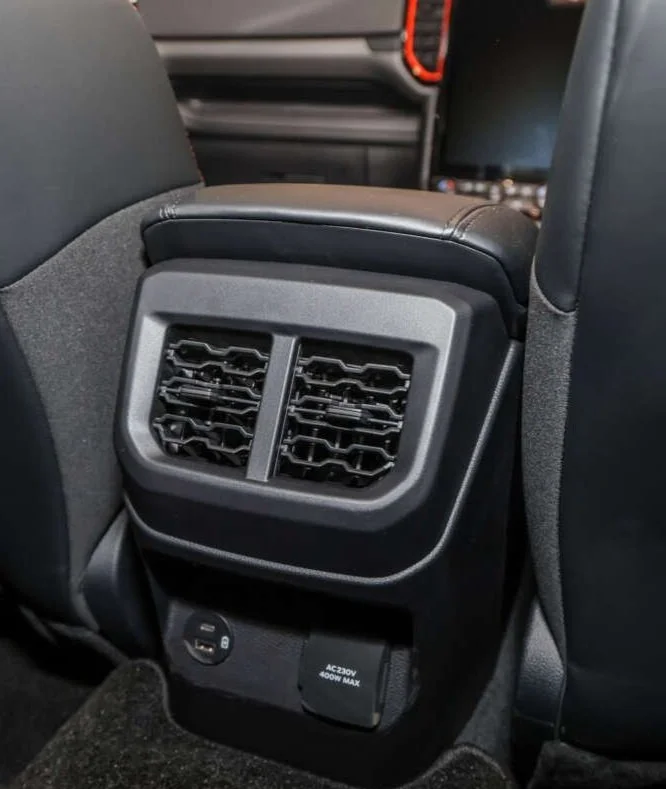Ford Ranger Plug-In Hybrid
Topic
Achieving the Best User Outcome in a Constrained Design Challenge:
Trade-offs and Cross-functional Review
Year
2022
Organization
Ford Motor Company
Challenge
The product development teams were tasked with re-design of the Ford Ranger interior to accommodate new features for the upcoming plug-in hybrid variant. This vehicle offered new features including additional power capabilities in the cabin and the cargo area of the vehicle as well as new electric vehicle (EV) drive modes. This design example focusses on the design of the power outlets into the existing vehicle, Ford Ranger.
01
Ergonomic Design
UX Methods
02
Context of Usability
03
Design Feedback
04
Usability Testing
Ergonomic Design & Context of Use
Due to electrical constraints, we were already limited to one section of the interior of the vehicle to package and design the power outlet and it’s necessary components. This section was the rear console area of the vehicle in the second row.
Ergonomics
Operational Hand Clearances for:
Opening power outlet and fitting a power plug
Connecting a USB A/C
Re-setting system via circuit breaker (infrequent use)
Ergonomic operating hand clearance requirements: 25mm around control*
Context of Use (User Research Insights)
Users often wear gloves if the vehicle is mainly used for work
Multiple devices can be plugged in depending on the use case (camping, work, etc.)
Cross-Functional Wars
Would 12mm be enough?
Do users really need both a USB and Power point???
Outcome
Design
UX
Engineering
All components have to be symmetric, it will ruin the vehicle’s harmony
Design Review
After several iterations working with the engineering and design teams, we achieved a balance of trade-offs considering electrical requirements, appearance and usability (including consideration of key user experiences)
As additional power is a key feature of the new vehicle, usability of that feature was prioritised. Trade-offs were made on behalf of each team
No symmetrical design
25mm was not achieved, and best achievable result was 20mm
Engineering deviations on standard…
Usability Testing
In this design problem, we have already established a less than ideal scenario, so it was time to test and validate our design
Purpose: Test our worst case (95th percentile male with gloves)
Users: Lucky for us and with the scope of the part we were designing, we were able to recruit 10 male mechanics and engineers working at the Ford workshop (ensured we tested half with work gloves)
*Note: We also recruited females, including ones with long nails. Again another user that may be forgotten along the way, but equally matters
Test: Users were provided with a brief to charge a provided laptop and mobile phone/hand-held radio depending on the variant tested
Results:
What went well?
100% of users completed the tasks with no difficulty observed
What didn’t go well?
“What does the thing with the big button do?”
All users completing the task ensured that what we compromised on in terms of cleaance would still be usable
Our test did provide us with further insights regarding the circuit breaker which re-sets the system in case power is over-drawn. Users were confused by the circuit breaker and the large button and this led us to conduct further work into our labelling/Sync screen to better explain the purpose of the circuit breaker.
Lessons learned
Stakeholder management - Learning how to balance the needs of cross-functional teams, and work together to achieve a common purpose: delivering a good user experience for users in their new access to additional power in their vehicle
Usability Testing - One size does not fit all, even though we were designing below the ergonomic design requirements, it depends on the scenario we are designing for and our usability test helped prove that



